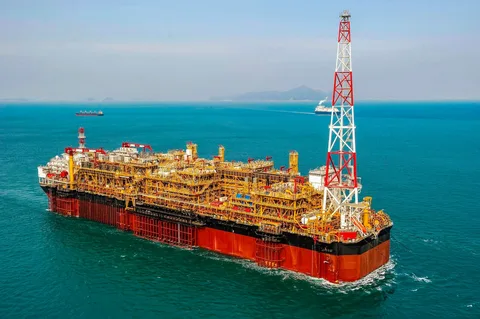Introduction
Floating Production Storage and Offloading (FPSO) units have become a critical solution for offshore oil and gas exploration and production. FPSOs are vessel-based systems designed to receive hydrocarbons produced from offshore fields, process the oil and gas onboard, and store them until they are offloaded to tankers or transported via pipelines. Their flexibility, mobility, and ability to operate in remote deepwater and ultra-deepwater environments make FPSOs essential in today’s oil and gas landscape. With the global demand for hydrocarbons continuing and new reserves being discovered offshore, the FPSO market is positioned for steady growth, especially in regions where permanent offshore platforms are not economically feasible.
Market Drivers
The primary driver of the FPSO market is the rising demand for offshore oil and gas production. As shallow-water reserves mature, exploration and production activities are shifting toward deepwater fields, where FPSOs provide cost-effective and versatile solutions. Another driver is the growing number of aging offshore assets that require replacement or refurbishment, leading to higher adoption of FPSOs. Technological advancements, such as modular topside systems and digital monitoring, are enhancing FPSO efficiency. Additionally, the ability of FPSOs to relocate and serve multiple fields over their lifecycle adds significant value for oil and gas companies.
Market Challenges
Despite their advantages, FPSOs face several challenges. High capital and operational costs remain a major barrier for smaller operators. Technical risks, including complex topside integration and safety concerns in harsh offshore environments, also pose challenges. Regulatory compliance, particularly regarding emissions and environmental safety, adds to project timelines and expenses. Market volatility in oil prices impacts investment decisions in new FPSO projects. Moreover, the long construction and conversion timelines of FPSOs can delay production schedules, creating uncertainty in project returns.
Market Segmentation
The FPSO market can be segmented by type, construction method, and application.
- By Type: FPSOs can be categorized into oil FPSOs, gas FPSOs, and multi-purpose FPSOs. Oil FPSOs dominate due to higher offshore oil exploration activities.
- By Construction Method: New-build FPSOs are constructed from scratch, while converted FPSOs are created by converting existing tankers. Conversion projects are often cost-effective and faster to deploy.
- By Application: Deepwater and ultra-deepwater exploration account for the largest share, as these environments are often inaccessible to fixed platforms. Shallow-water applications also exist but are less dominant.
Regional Insights
The FPSO market is geographically diverse, with strong activity across several regions. South America, particularly Brazil, is the largest market, driven by deepwater and pre-salt basin developments. Africa follows closely, with countries like Angola and Nigeria investing heavily in offshore exploration. Asia-Pacific, led by Malaysia, Indonesia, and Australia, is also a significant market due to expanding offshore reserves. In Europe, the North Sea remains important, though activity has matured. Meanwhile, North America, particularly the Gulf of Mexico, continues to see demand for FPSOs in deepwater operations.
Key Market Trends
Several trends are shaping the FPSO industry. There is a growing focus on modular design and standardization to reduce costs and improve project timelines. Digitalization and remote monitoring are enhancing safety and operational efficiency. Hybrid power systems and integration of renewable energy sources onboard FPSOs are being explored to reduce emissions. Leasing models are becoming increasingly popular, allowing operators to deploy FPSOs without significant upfront capital. Additionally, collaborations between shipbuilders, engineering firms, and oil companies are accelerating innovation in FPSO construction and operation.
Future Outlook
The future of the FPSO market is promising, with demand expected to rise alongside offshore oil and gas exploration. As global energy demand grows, particularly in developing economies, offshore reserves will play a crucial role in meeting supply needs. Technological innovations will continue to lower costs and improve operational safety. Leasing models are likely to dominate, providing flexibility for operators. Furthermore, with increasing focus on sustainability, FPSOs are expected to incorporate greener technologies, ensuring compliance with future environmental regulations.
Conclusion
The FPSO market is integral to the future of offshore oil and gas production. By providing flexibility, mobility, and cost-effectiveness, FPSOs enable exploration and production in challenging environments. While high costs, technical complexities, and regulatory pressures remain challenges, the market’s growth trajectory is supported by rising deepwater exploration and technological advancements. The FPSO industry will continue to evolve, adapting to global energy demands and sustainability goals.




